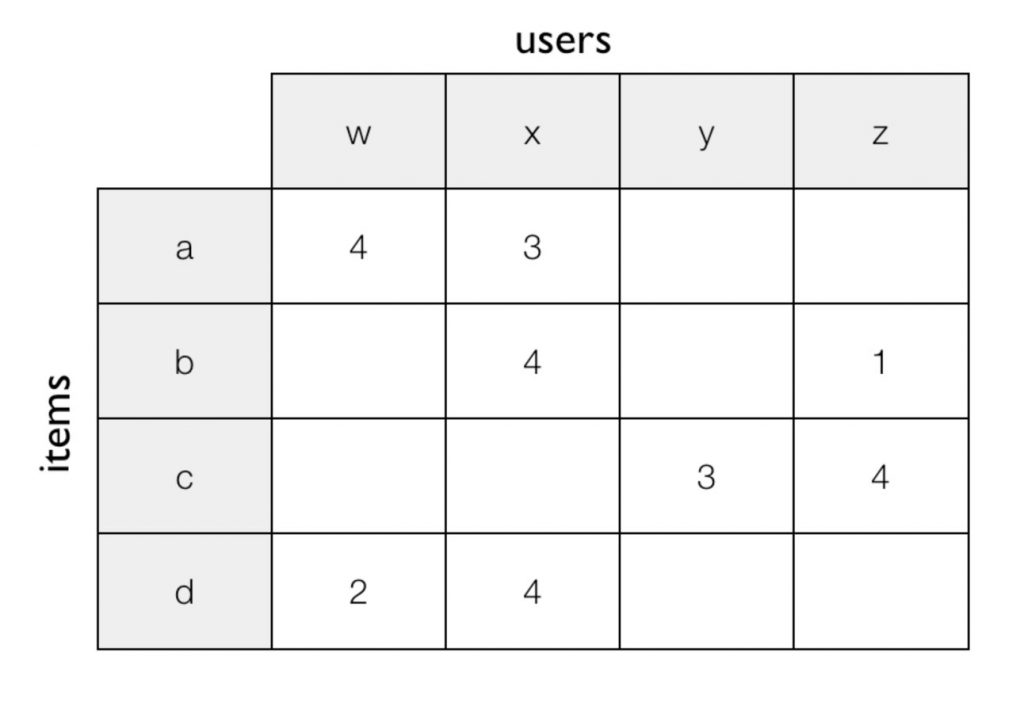“Who eats pizza in Norway?”
In her ethnography of a Norwegian marketing firm, the anthropologist Marianne Lien describes an advertising campaign intended to promote frozen pizzas:
In spring 1992, Viking Foods manufactured six pizza products on the Norwegian market. […] The emergence of the present product range is a result of careful considerations of the characteristics of real and potential target groups (171-2).
Pizza Superiora was “the people’s pizza,” intended for a general audience; Pizza Romano, more expensive and with “a distinctive flavor and character,” targeted “a more adult and selective audience;” Pizza Preciosa, with a wholemeal crust and vegetable topping, was aimed at “women aged 15-40 focusing on health, body and appearance. Vegetarians” (171-2). The work of the marketers, Lien argues, was to forge connections between their products and groups of consumers. A successful connection between a market segment and a frozen pizza product would lead to economic success.
However, as Lien shows, people and products are not stable entities. Market segments and frozen pizzas change over time and in response to each other. As marketers tailor product lines, consumers buy and eat with an eye to their own social distinction. Successful marketing campaigns do not only identify “real and potential target groups” — they produce them. The Pizza Romano and the “more adult and selective” pizza eater emerge in concert with each other. Intersections of gender, age, and dietary restriction are made meaningful by the differentiation of targeted products. In demographic marketing, groups of people and groups of products are mutually defining: brand strategists understand pizzas in terms of people and people in terms of pizzas.
Synaptic Functions
In his 1978 book Culture and Practical Reason, Marshall Sahlins draws a provocative comparison between the work of marketers and the work of social scientists:
he [the anthropologist] acts in something of the same way as a market researcher, an advertising agent, or a fashion designer, unflattering as the comparison may be. For these hucksters of the symbol do not create de novo. In the nervous system of the American economy, theirs is the synaptic function. It is their role to be sensitive to the latent correspondences in the cultural order whose conjunction in a product-symbol may spell mercantile success (217).
According to Sahlins, marketing is itself a kind of social theory — a mode of sensitivity to “latent correspondences in the cultural order,” organized around the imperatives of commerce. Evident in Lien’s account of the Norwegian firm, demographic marketing is a way of understanding groups of people through their correspondences with groups of things. And, although they do not produce symbols “de novo,” it seems clear that marketers not only describe latent correspondences — they, at least in part, create new ones as new products come to market and become vehicles for the expression of social distinction. The synaptic function is both descriptive and generative.
In order to examine the generative qualities of the synaptic function, I describe here a contemporary challenger to traditional demographic marketing: an algorithmic recommendation technique called “collaborative filtering.” Collaborative filters are an increasingly frequent feature of online infrastructure, suggesting books, movies, music, and news to users. They draw correspondences between users and items by comparing user ratings, producing recommendations with the familiar form: “Users like you liked items like this.” In performing their synaptic function, social theorists (such as marketers and anthropologists) endorse and generate new figurations of social collectives. Novel modes of understanding correspondences between persons and things, it follows, may produce novel figurations of social form.
“On the Internet, there’s no excuse for not personalizing”
In 2002 John Riedl and Joseph Konstan, a pair of computer scientists from the University of Minnesota, published a book for marketing executives. Word of Mouse: The Marketing Power of Collaborative Filtering promised to upend the marketing world by sharing the secrets of a new science for understanding consumers — not as members of demographic groups, but as individuals. “The urge to poll and classify is intoxicating” (109), they wrote. “The problem is, simple demographics don’t begin to tell the story of individuals” (112). With the advent of online retail and new technologies for tracking the activity of customers, marketers could begin to follow these individual stories, targeting users not through generic demographic profiles, but with personalized recommendations.
Collaborative filtering was an algorithmic technique for producing such recommendations. Users would rate items (explicitly or implicitly, e.g. on a 5-point scale or by purchasing a particular item), and on the basis of these ratings, the filter would make suggestions drawn from the ratings of similar users. These similar users, algorithmically determined, took the place of market segments. Instead of assuming that a customer would want what others in their demographic group wanted, the collaborative filter assumed that customers who shared some preferences would also share others. Part of collaborative filtering’s appeal was its economy: the only information it needed to work was a set of numerical ratings — information about specific users or items to be recommended was superfluous.
The book’s cover promoted collaborative filtering as the equivalent of ESP for Sahlins’s synaptic function: “Know what your customers want even before they do.” Below that slogan, a cheery and diverse crowd of customers waved from inside a computer monitor, apparently pleased by this technological breakthrough in taste prediction. This group represented the collaborators of collaborative filtering — the users whose aggregated activity could be algorithmically mined to predict each other’s preferences.
If the market segment is the paradigmatic collective form of demographic marketing, this group of users inside the monitor might be the paradigmatic form of collaborative filtering. “Think about how much more people would step outside their demographic groups if they were not only permitted to, but encouraged to,” wrote Riedl and Konstan (112). The friendly crowd on the cover appears to cut across traditional demographic categories of race, gender, and age, and the implication is that tastes and preferences within this group also cut across those conventional lines. Unhindered by externally imposed categories, these individuals are free to follow their own preferences, facilitated by the suggestions of the collaborative filter, which could even encourage users to broaden their horizons by suggesting items that the broad brush of market segmentation would miss. Although these users do not know or communicate directly with one another, through the algorithm they are made collaborators — a computationally arranged aggregate of taste-bearing individuals.
Making Similarities in the Matrix
In order to understand the kinds of groups made and understood through collaborative filtering, it is essential to wade into its technical form — the algorithms tasked with finding order among individuals.
The archetypal form of a collaborative filtering system is a matrix: a grid, with items along one side, users along the other, and ratings at their intersections. This matrix is mostly empty (or “sparse”), since most users will have not rated most items. The work of the collaborative filtering algorithm, as it typically stated, is to predict what values will show up in the empty spaces of the matrix. These predictions are then provided in some form to the user as recommendations. Thus, at any given time, the matrix is in an anticipatory flux: new ratings from users arrive constantly, displacing their predicted values and shifting the others. This filling process is the signature action within the matrix — blank values are replaced by predictions, which are then replaced by actual ratings. Progress from emptiness, through prediction, to actualization makes the matrix a proleptic social representation, holding simultaneously a record of past correspondences between persons and things and the anticipation of future ones.
The collaborative filtering matrix intermeshes the identities of users and items. It is both possible and typical for a collaborative filter to take no special account of either, organizing all entities strictly in terms of ratings: users are known as a collection of relations to items and items are known as a collection of relations to users. Persons and things enjoy no separate modes of existence in the matrix, which is indeed a function for translating one into the other: consumers can use the filter to organize items, and marketers can use the filter to organize consumers.

Netflix Prize diagram.
A common approach to recommendation is illustrated in this diagram from a recent article: the numbers from the matrix are statistically analyzed and their variance is mapped to a number of axes (in this simplified illustration, only two). Users who are near each other on this coordinate system are similar, and a user will be recommended items from the “neighborhood” around them. Although the axes that represent latent factors need not be labeled in order to produce recommendations, labels are often used as a way to explain and justify a system’s output. Here, one can see the persistence of demographic ways of understanding groups: this figure organizes its contents according to gender and seriousness, making sense of the algorithm’s output through its similarity with conventional ways of categorizing movies. The diagram also makes evident the role of the word “like” in “Users like you liked items like this”: preference and similarity are collapsed in this coordinate system, where “being like” and “liking” have been equated. You may not like the same things as the rest of your demographic group, but you probably will share preferences with your “nearest neighbors” in the abstract cartography of collaborative filtering.
Automatic Correspondence
The contrast in Word of Mouse between individualized recommendation and the “lazy, prejudiced philosophy” (113) of demographic profiling was in fact a novel frame for collaborative filtering. Publications from Riedl and Konstan’s research group at the University of Minnesota and other groups around the US working on recommender systems had tended to emphasize the “collaborative” in collaborative filtering. These systems were envisioned as a way to reconnect lone users to larger groups, to “automate word of mouth,” as one paper put it (Shardanand and Maes 1995), and to mediate between individuals and the unwieldiness of increasingly large data sets. Where Word of Mouse championed the reemergence of individuals from the blunt taxonomy of traditional marketing, the academic literature on recommendation often focused on the rearrangement of those users into more meaningful groups. Collaborative filtering was not about privileging individuals over broader demographic categories, but about reinstalling isolated individuals into an algorithmically tuned collective.
In the techniques that collaborative filters use to organize individuals into collective forms, Sahlins’s comparison of social scientists and marketers has taken a more literal existence. The statistical methods that populate the matrices of recommender systems, such as correspondence analysis and its variants, are commonly adapted from the social sciences. The famous graphs of Bourdieu’s Distinction, coordinate systems depicting the correlations of taste and class, derive from methods remarkably similar to those that now power many online recommenders (for more on the history of correspondence analysis, see Desrosières, this issue). Collaborative filtering automates the synaptic function, moving the correspondence-finding work of social theorists (such as marketers and sociologists) into the algorithm.
This automation of social theory has a number of potential effects. As algorithms, specific theories about the correspondences between persons and things can be built in to the infrastructures of browsing and purchasing online. Used as filters, social theories become increasingly performative: the models of social science may come to shape the phenomena they were meant to describe. Through the continuous collection of user data, the collaborative filter has an increased level of flexibility and responsiveness: the positions of individuals vis-à-vis groups can change continuously. John Cheney-Lippold has recently described this kind of algorithmic interpellation as “soft biopolitics” (2011), a shifting mode of categorization that necessitates a reappraisal of the models of power and taxonomy in Foucauldian biopolitics. As a result of their flexibility and infrastructural existence, there is a risk that these systems will evade critique, coming to appear as natural and objective methods of organization.
Algorithmic recommendation is not simply a higher-resolution representation of a market — a more precise picture of atomistic individuals that does away with the need for larger-scale approximations like market segments. Rather, it is another mode of the synaptic function — another technique for making and interpreting correspondences between persons and things, another way of organizing collective forms. Collaborative filters algorithmically rearticulate the relationship between individual and aggregate traits, suggesting the need for social scientific theories that eschew the classic break between groups and their members (for a preliminary attempt at such an approach, see Latour et al., forthcoming).
The work of recommendation, like the work of demographic marketing, relies on the idea that there are meaningful similarities among consumers and that these similarities correspond with similarities in objects. However, in algorithmic form, these correspondences take on new forms and meanings, blending preference, identity, and similarity. As these theories are built into online infrastructures, shaping the relations between persons and things and articulating new collective forms, they demand attention, not only as material for analysis, but as new modes of analysis itself.


